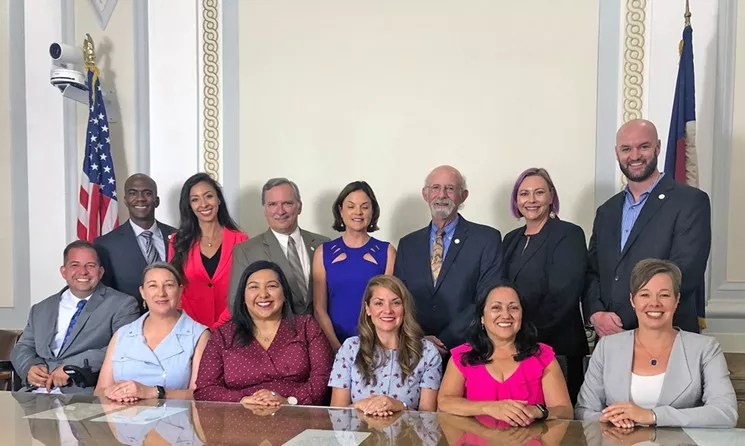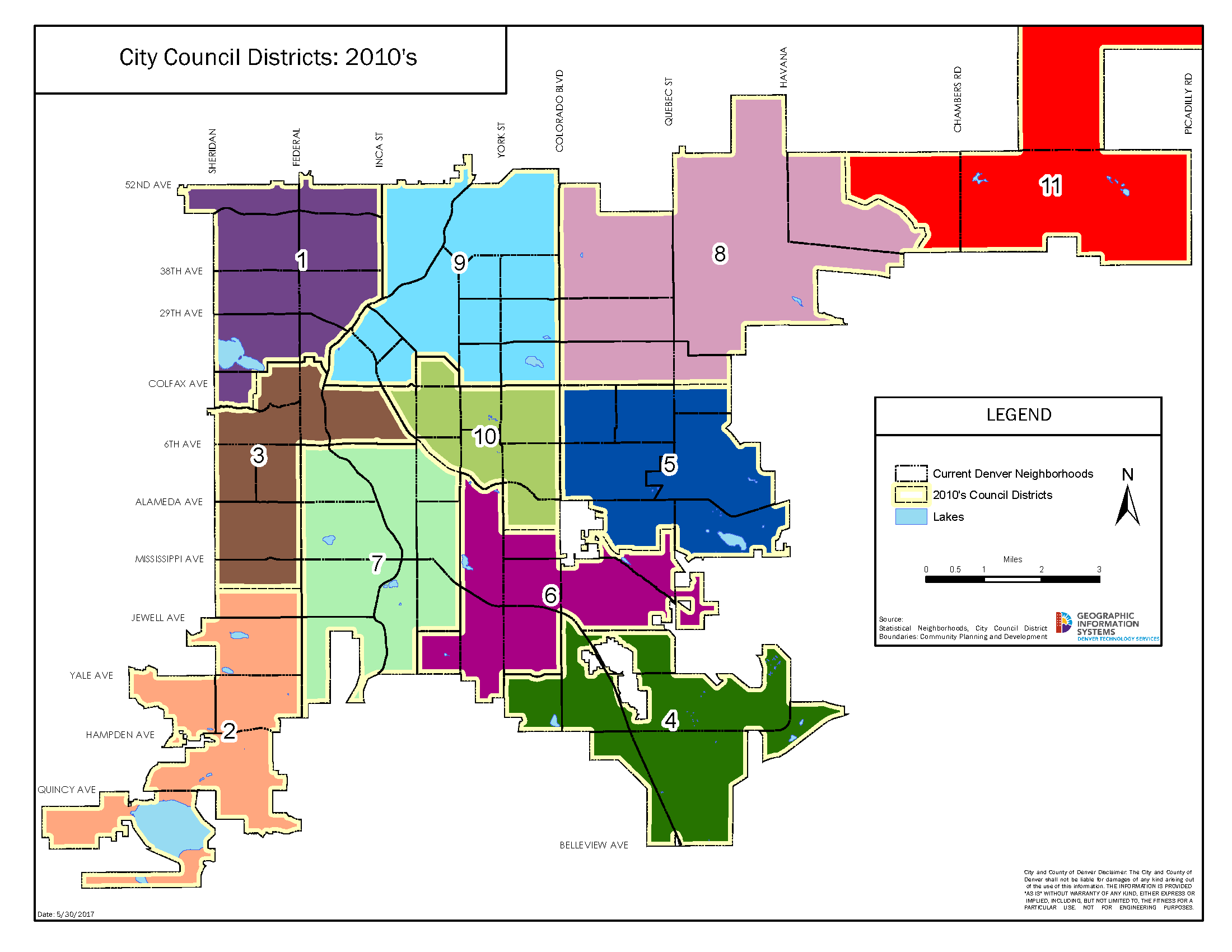
Denver City Council

Audio By Carbonatix
In anticipation of the release of 2020 U.S. Census numbers, the City of Denver has launched the process that will redraw Denver City Council districts across the city.
“We want to, as best as possible, keep communities of interest intact. And that stops gerrymandering from happening,” explains Councilwoman Amanda Sandoval, who is guiding Denver’s redistricting process. “This idea of ‘What is a community of interest?’ – that’s never been asked by Denverites.”
To determine those communities, the city is encouraging Denver residents to use Representable software to share their specific interests, resulting in what the Representable website describes as a “geographic area that shares cultural, historical, or economic interests. Mapping communities of interest encourages the drawing of fairer voting districts.”
While the redistricting process won’t result in entire districts shifting, borders can change – so that constituents currently in one district might wind up in another once redistricting is completed.
Will you step up to support Westword this year?
At Westword, we’re small and scrappy — and we make the most of every dollar from our supporters. Right now, we’re $20,000 away from reaching our December 31 goal of $50,000. If you’ve ever learned something new, stayed informed, or felt more connected because of Westword, now’s the time to give back.
“A neighborhood may not stay intact. The biggest change ten years ago was Montbello got cut in half,” Sandoval recalls.
The city will start drawing the district maps on September 30, once the new Census data is available. In March 2022, Denver City Council will vote on the new maps. The next election for all thirteen Denver City Council seats is in spring 2023.
Aside from paying attention to “communities of interest,” councilmembers will try to “keep the council boundaries as compact as possible and also respect geography lines, like I-25 or the Platte River,” says Sandoval.

Current Denver City Council districts.
denver.gov
Most important, the districts should have roughly the same number of constituents. “You want each council district to have an equal population, plus or minus 5 percent, but you really do want to stay within that population criterion,” Sandoval explains.
Several members of Denver City Council recently floated the idea of moving from eleven to thirteen districts and removing the two at-large seats to keep a thirteen-member body. Denver switched from nine to eleven council districts, as well as two at-large positions, in the 1970s.
Since then, the per-district constituency count has hovered between the lower 40,000s and the mid-50,000s. But with the city’s recent growth, that count could jump to an estimated 66,868 for each of the eleven districts. A decade ago, the Census showed Denver’s population at under 600,000. But 2019 Census estimates showed the population at over 727,000, so the number of residents in each of the eleven council districts could grow significantly.
The full council would need to approve any charter-change measure recommending changing the number of districts by the end of August in order to put it on the November ballot.
The new Census data was originally supposed to come out in March, but was delayed because of the pandemic; it’s now due in September. Although that shortens the timeline, councilmembers want Denver residents to participate in the redistricting process.
“The concept of one person, one vote and being able to have representation that matches with your values,” Sandoval says. “It’s important that you start looking at those boundaries and how neighborhoods and areas have the representation that they need, specifically areas of minorities or different socio-economic diversity.”